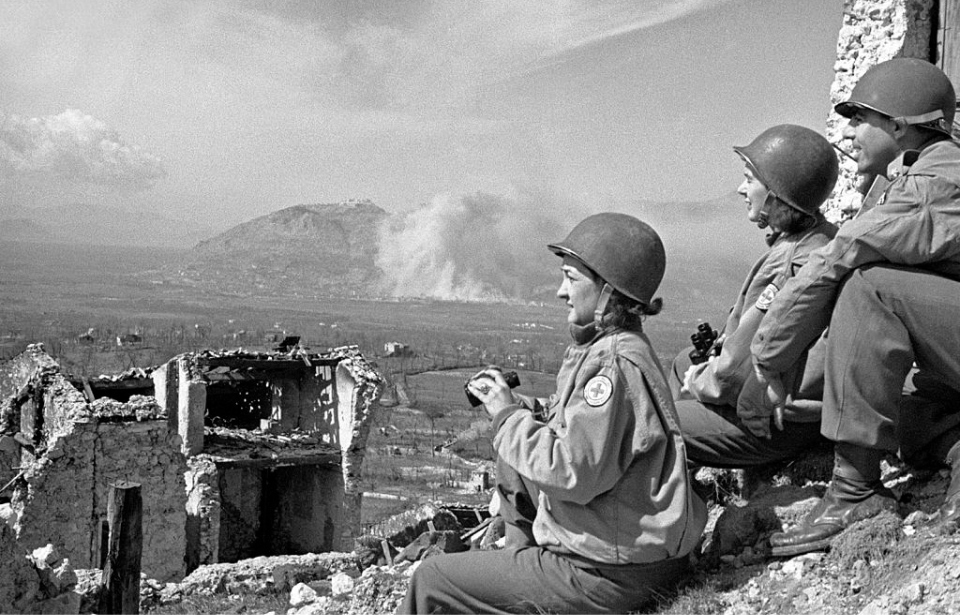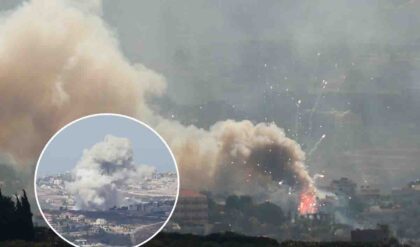
Photo Credit: Universal History Archive / Universal Images Group / Getty Images
The Battle of Monte Cassino was fought between the Allies and Germans in the historic Monte Cassino Abbey, at the entrance to the Rapido and Liri valleys. The area was part of the Winter Line, a series of German fortifications that stood in the way of the Allied march on Rome.
The battle was waged in multiple stages, each more arduous than the last. The initial assault in January 1944 was met with fierce resistance from the Fallschirmjäger, resulting in a stalemate. It was at this stage that a group of Red Cross nurses sat to watch the fighting. They positioned themselves on a nearby destroyed building, which gave them the ideal vantage point – with the help of their binoculars, of course.
From the nurse’s position, Monte Cassino Abbey could easily be seen in the distance.
This stage of the battle wasn’t a success. In February, the Allies launched a renewed offensive, led primarily by troops from New Zealand and the 4th Indian Infantry Division. The Germans fought back, leading the British command to think they were using the Abbey as an observation post. This contradicted an earlier declaration that they wouldn’t use the building because it held such historical significance.
The Allied response was to use American bombers to destroy Monte Cassino Abbey, sparking significant controversy. Not only was there public outrage, but the Germans had never planned on using it for anything. Once it was destroyed, the paratroopers moved in, as it provided them with an exceptional vantage point.
More from us: Philip Toosey Served As the Inspiration for Lt. Col. Nicholson In ‘The Bridge on the River Kwai’
After over four months of fighting, the Allies finally took Monte Cassino – and the scene was in stark contrast to that the nurses had witnessed earlier in the engagement. When they stormed the hill, they found it had long been unoccupied by the Germans, who’d retreated to somewhere else along the Winter Line.





